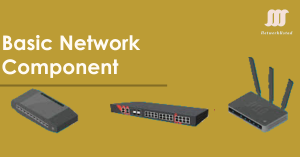Two phrases that are commonly seen in .NET development are ADO.NET and ASP.NET. These concepts appear to be related, but it is important to know how they differ. The objective of this article is to explain what ADO.NET and ASP.NET do as part of the .NET framework, trace their growth paths, and provide examples of how they are used in real-life situations.
From Dynamic Web Pages to Robust Web Applications: The Evolution of ASP.NET
Let’s back up before we get into the distinction between ADO.NET and ASP.NET. Dynamic web page creation was made possible by Microsoft with Active Server Pages (ASP) in the late 1990s. Through server-side scripting in VBScript mostly, ASP allowed for dynamic content generation. However, code organization, scalability, and error handling were some of the areas where it fell short.
The year 2002 saw ASP.NET emerge offering a significant new leap forward in web development by leveraging the power of object-oriented programming (OOP) atop the sturdy base that is . NET. While the scripting of its predecessor, ASP, was loosely held together, ASP.NET brought a forefront of strongly-typed languages like C#. Hoever, With this change came the ability to reuse code, make it more maintainable and have an easier time debugging.
If you were to build a large-scale web application using ASP, your code would grow out of control fast. However, by taking an OOP approach ASP.NET dealt with this issue by allowing components to be created in such a way that they are reusable thus speeding up both development processes significantly while at the same time simplifying maintenance.
In addition, one of the most significant improvements introduced by ASP.NET was its error handling. When debugging applications in ASP, one usually has to wade through a tangle of code. But ASP.NET brought a structured exception handling system that simplifies error spotting, tracing and correction. This has made web applications more stable and reliable
Beyond Constant Connections: The Rise of Disconnected Data Access with ADO.NET
Hence, let us get to the heart of what sets ADO.NET and ASP.NET apart. ADO.NET came after ActiveX Data Objects (ADO), which were launched in 1996. ADO allowed for database interaction but did so in a connected manner i.e. it required maintaining persistent connections. Such an approach could result in performance bottlenecks especially when dealing with a large number of users.
ADO.NET introduced a new era of data access by bringing in its disconnected architecture. In other words, instead of having to keep connections open all the time, what ADO.NET does is that it retrieves data from databases, works with them locally, and then sends back any updates made. This makes scaling applications much easier since the servers do not have to bear heavy loads caused by continuously running queries against huge amounts of information stored on disks somewhere far away or fast but expensive memory like RAM.
Example: Let’s say you’re pulling product details from a database for an e-commerce site. When using ADO, if a number of people request the same information at once, the connection is kept open while the page is being built, which might slow down the server. With ADO.NET however, the details are gotten, the connection closed and the web page populated therefore in this case being disconnected will minimize the time the database connection stays active hence saving on server resources.
Illustrating the Difference: ADO vs. ADO.NET Code Comparison

To further highlight the difference between ADO.NET and ASP.NET, let’s look at a simple code example. Both snippets aim to retrieve customer names from a database.
ADO (using VBScript):
‘ Establish a connection to the database
Set conn = Server.CreateObject(“ADODB.Connection”)
conn.Open “connection string”
‘ Create a recordset and execute the query
Set rs = Server.CreateObject(“ADODB.Recordset”)
rs.Open “SELECT Name FROM Customers”, conn
‘ Iterate through the recordset and display customer names
Do While Not rs.EOF
Response.Write rs(“Name”) & “<br>”
rs.MoveNext
Loop
‘ Close the recordset and connection
rs.Close
Set rs = Nothing
conn.Close
Set conn = Nothing
ADO.NET (using C#):
using (SqlConnection connection = new SqlConnection(“connection string”))
{
SqlCommand command = new SqlCommand(“SELECT Name FROM Customers”, connection);
connection.Open();
SqlDataReader reader = command.ExecuteReader();
while (reader.Read())
{
Console.WriteLine(reader[“Name”]);
}
reader.Close();
}
This basic example demonstrates how ADO.NET, with its streamlined syntax and object-oriented approach, offers a more modern and efficient way to interact with databases.
Beyond the Basics: Higher-Level Abstractions and the Future of Data Access
ADO.NET is a great start, but developers often find themselves using Entity Framework for increased productivity because it’s a higher-level abstraction. Entity Framework (EF) is an object-relational mapper (ORM) that allows you to interact with databases using objects and relationships instead of raw SQL queries. This makes data access simpler, speeds up development, and reduces boilerplate code.
The world of data access is always changing. While ADO.NET will always be important, newer technologies and techniques come out all the time. Micro-ORMs give you a lightweight alternative to heavy frameworks; at the same time, specific use cases are driving NoSQL database adoption.

In Conclusion: ADO.NET and ASP.NET – Distinct yet Complementary
For .NET developers, understanding the difference between ADO.NET and ASP.NET is crucial: ASP.NET is used to build powerful web apps, ADO.NET is for fast and scalable data access. Even though these technologies are separate, they are used together in many .NET applications. Thus, any developer who wants to create contemporary efficient programs should keep track of changes in both fields as the .NET environment develops further.





